Fundamentals
Preparing students for Next Gen NCLEX® success





Davis Advantage for Fundamentals of Nursing and Davis Advantage for Basic Nursing are two complete, integrated solutions that combine the power of a student-focused textbook with personalized learning, clinical judgment, and quizzing experiences.

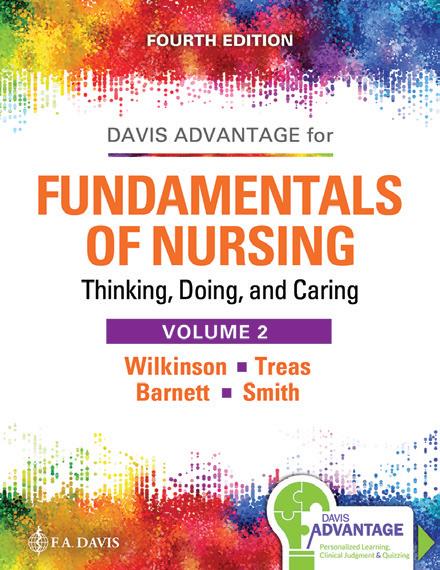

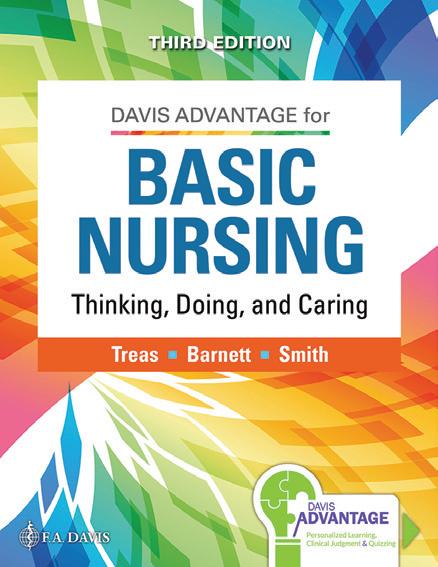
Together, they establish a structure that helps new nursing students learn how to think like a nurse, make the connections to key Fundamentals topics, and attain the foundational knowledge needed to succeed in their Fundamentals course.
§ eBook
§ Davis Advantage
•
§ Additional Resources
“Davis Advantage has easy to use modules that help to enhance students’ learning of the concepts. I love to utilize the clinical judgment scenarios for in-class group activities and learning. They help to enhance discussion of the material and allow students to ask more questions to facilitate their learning.”
—Jamie V., Instructor, Helena College

Dynamic, interactive content, integrated with insightful analytics, equips your students with the tools they need to master course content and prepare for real-world practice.
Davis Advantage addresses your teaching challenges; allows you to create a course that aligns with your unique classroom needs; and gives you the tools to monitor your students’ performance, whether you are teaching in-person or online.

Teach and test your students’ clinical judgment to shape the nurses they become.
Six Fundamentals scenarios present complex, real-life clinical situations that align with the new NGN format and NCSBN Clinical Judgment Measurement Model.
§ Features a dynamic patient chart that expands with additional data as students progress through the case.
§ Includes new NGN item types such as extended drag-and-drop, grid/matrix, cloze, extended multiple response, and enhanced hot spot.
§ Delivers detailed feedback that identifies the cognitive skills practiced according to the Clinical Judgment Measurement Model.
Both Instructor Test Banks now include NGN format questions.
§ Features complex questions that mirror the format of the NGN and the new item types.
§ Reflects content from the textbooks to further build a solid understanding.
§ Addresses multiple cognitive skills from the Clinical Judgment Measurement Model.
Whether your choice is Fundamentals of Nursing or Basic Nursing, your students will have a text that provides the evidence-based, foundational knowledge they need to become thinking, doing, and caring nurses.


§ Prepares students for real-world practice with case studies and clinically focused exercises that reinforce the thinking, doing, and caring they will perform as nurses.
§ Develops the knowledge, skills, and experiences students need to build strong clinical judgment.
§ Emphasizes the important aspects of safe and effective care to ensure the best patient outcomes.
1 VOLUME
Basic Nursing, 3rd Edition
Leslie S. Treas, PhD, RN, CPNP-PC, NNP-BC
Karen L. Barnett, DNP, RN
Mable H. Smith, PhD, JD, MN, NEA-BC
§ Guides students through over 230 illustrated, step-by-step procedures with detailed rationales to show exactly how to perform and master essential nursing skills.
§ Speaks directly to students in a clear and easy-to-understand style.
§ UPDATED! Example Client Conditions to reflect the CJMM
§ UPDATED! Nursing Process chapters combined into a single chapter to better reflect the interconnectedness of each step in the Nursing Process

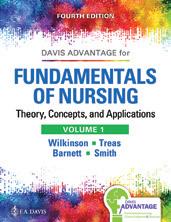
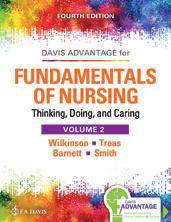
Two-Volume Approach
23. Promoting Asepsis & Preventing Infection 24. Promoting Safety 25. Facilitating Hygiene 26. Administering Medications IV. Supporting Physiological Functioning 27. Nutrition 28. Urinary Elimination 29. Bowel Elimination
Skin Integrity & Wound Healing
Oxygenation
30.
Sensation, Perception, & Response 31. Pain 32. Physical Activity & Immobility 33. Sexual Health 34. Sleep & Rest
Circulation & Perfusion 38. Fluids, Electrolytes, & Acid-Base Balance V. Nursing Functions 39. Perioperative Care 40. Leading & Managing 41. Nursing Informatics 42. Promoting Health VI. The Context for Nurses’ Work 43. Community & Home Health Nursing 44. Ethics & Values 45. Legal Accountability 46. Holistic Healing [Online]

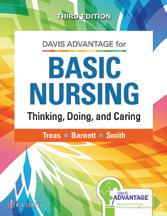
Judith M. Wilkinson, PhD, ARNP
Leslie S. Treas, PhD, RN, CPNP-PC, NNP-BC
Karen L. Barnett, DNP, RN
Mable H. Smith, PhD, JD, MN, NEA-BC
“Easy to read, keeps information interesting, presented in a format that involves students in their learning. Smaller chunks with breaks/questions/reviews allow student to take a breath and think about what they had just read and apply it.”
— Judith E., Colorado Mountain College, Spring Valley
Ask us how our Fundamentals solutions align with the new AACN Essentials!!
walkthrough • Learn more | Contact us at Hello@FADavis.com or visit FADavis.com/DavisAdvantage Fundamentals of Nursing, 4th Edition 2
Surgical Patient
the respiratory system.
➤ Identify individual, environmental, and pathological factors that influence oxygenation.
➤ Assess oxygenation, breathing, and gas exchange.
maintaining and improving oxygenation.
➤ Safely and correctly perform common nursing procedures related to oxygenation, breathing, and gas exchange.
Atelectasis Anything that reduces ventilation (e.g., tumor, obstructed airway) can cause atelectasis, or alveolar collapse.
problems? ThinkLike a Nurse 36-6
➤ Interpret diagnostic testing related to oxygenation, breathing, and gas exchange.


➤ Evaluate adequacy of oxygenation, breathing, and gas exchange, and modify nursing activities appropriately based on outcomes.
➤ Develop nursing diagnoses related to oxygenation, breathing, and gas exchange.
The questions and exercises in this book allow you to practice the kind of thinking you will use as a full-spectrum nurse. Crit icalthinking questions usually have more than one right answer, so we do not provide “correct answers” for these features. Try to answer these questions yourself. It is more important to develop your nursing judgment than to just cover content. You will learn more by discussing the questions with your peers. If you are still unsure, see the Davis Advantage chapter resources for suggested responses.
➤ Recognize medications used to enhance pulmonary function.

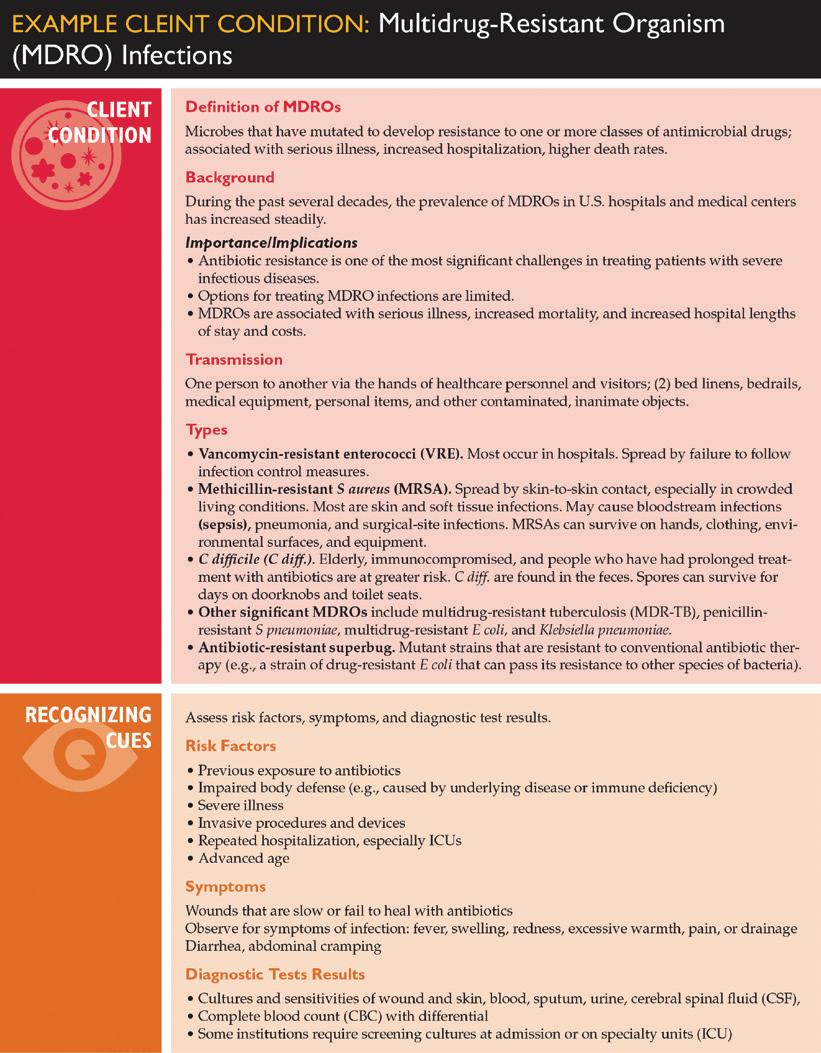

In a pulmonary clinic, your student assignment is to (1) perform a focused assessment related to breathing and oxygenation, (2) perform common therapeutic interventions related to breathing and oxygenation, (3) identify desired outcomes and evaluate achievement of those outcomes, and (4) plan for follow-up and home care needs. During your clinical day, you care for the following clients:
■ Mary is a 4-year-old girl with a history of asthma. Her mother, Ms. Green, has brought her in because of an “asthma attack.” Mary is sitting on her mother’s lap and breathing rapidly through an open mouth. Her cough sounds congested and wheezy. The nurse practitioner has prescribed a nebulized treatment containing albuterol (Proventil) and ipratropium bromide (Atrovent).

■ Mr. Chu is 78-year-old man complaining of cough, sore throat, fatigue, and weakness. His temperature is 100.4°F (38°C), pulse is 90 beats/min, respirations are
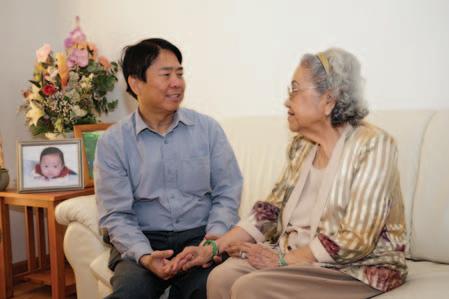
Mai Nguyen, Nam’s 76-year-old mother, has been complaining of fatigue and a persistent cough for approximately 2 weeks. Nam has brought his mother to the family clinic where you are a nurse. Mrs. Nguyen appears disheveled. Her clothes are rumpled and her hair is tousled. Normally she is dressed neatly and wearing makeup. She has a hard time signing in at the desk and tells the receptionist she has a 1:00 p.m. appointment, but it is 9:00 a.m. Mrs. Nguyen’s vital signs are as follows: blood pressure (BP), 142/90 mm Hg; pulse, 94 beats/min and regular; respirations 24 breaths/min and labored; temperature, 99.6°F (37.5°C) oral. (Continued)
Think Like a Nurse questions put students in the nurse’s role to develop their critical-thinking and clinical-reasoning skills.
NEW for Basic Nursing, 3rd Edition! Enhanced focus on Clinical Judgment
For gas exchange to occur in the alveoli, there must be adequate blood flow through the pulmonary circulation. The most common causes of impaired pulmonary circulation are pulmonary embolus and pulmonary hypertension.
You are the nursing supervisor on the night shift in a small community hospital. At the beginning of the shift, you have only one critical care bed available. During your shift, you receive calls for assistance on the following patients:
7686_Ch36_955-994 11/06/19 10:33 AM Page 986
Promoting Safe, Effective Nursing Care boxes emphasize competency-focused learning by highlighting a core competency expressed in practice.
■ Patient A has burns on her face, scalp, and chest and is coughing up sputum with black streaks.
■ Patient B has pneumonia but has suddenly become confused.
pulmonary embolus is obstruction of pulmonary arterial circulation by a foreign substance (e.g., a blood clot, air, or fat).
CLIENT
Provide goal-directed, client-centered care (Thinking, Doing, Caring)
is elevated pressure within the pulmonary arterial system. High pressure increases the workload of the heart. Over time, this causes right-sided heart failure, with a reduced amount of blood pumped into the pulmonary circulation. You will learn about the difference between right-sided and left-sided heart failure in a medical-
■ Patient C is short of breath and complaining that he can’t breathe. His skin is cool and moist, and he is coughing up clear sputum with small bubbles in it. Which patient would you admit to the critical care bed? Why?
Scenario: Mrs.Yablonski, 66-year-old former smoker, has recently had a permanent tracheostomy but can speak using an electromechanical device. She needs to learn how to suction herself and change the tracheotomy dressing. For 3 days in a row, different nurses have tried to explain how to perform the care. Each time, she became tearful and frustrated. The nurse manager speaks with her to identify problems that may be occurring. Mrs.Yablonski cites several issues:
Thinking: Including patients or their significant others as equal partners in care is the foundation of patient-centered care. Think about the following questions:

Sometimes it’s me. may just feel too overwhelmed, or may just not have any energy. But the nurses don’t always ask me feel well enough to learn. None of them really knows me, and they don’t take enough time with me. And sometimes my nurse would rather just do it herself and get over with.
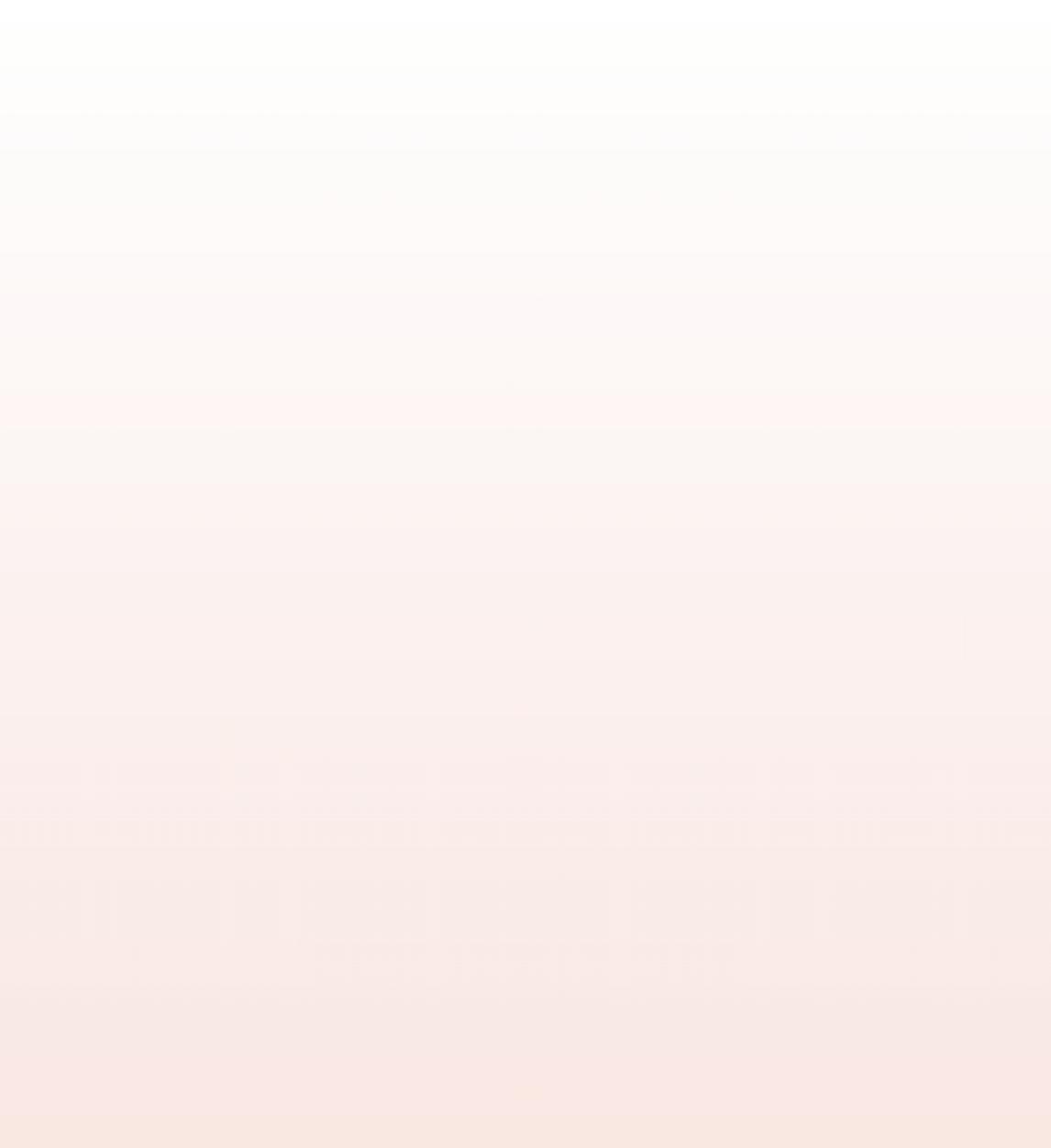
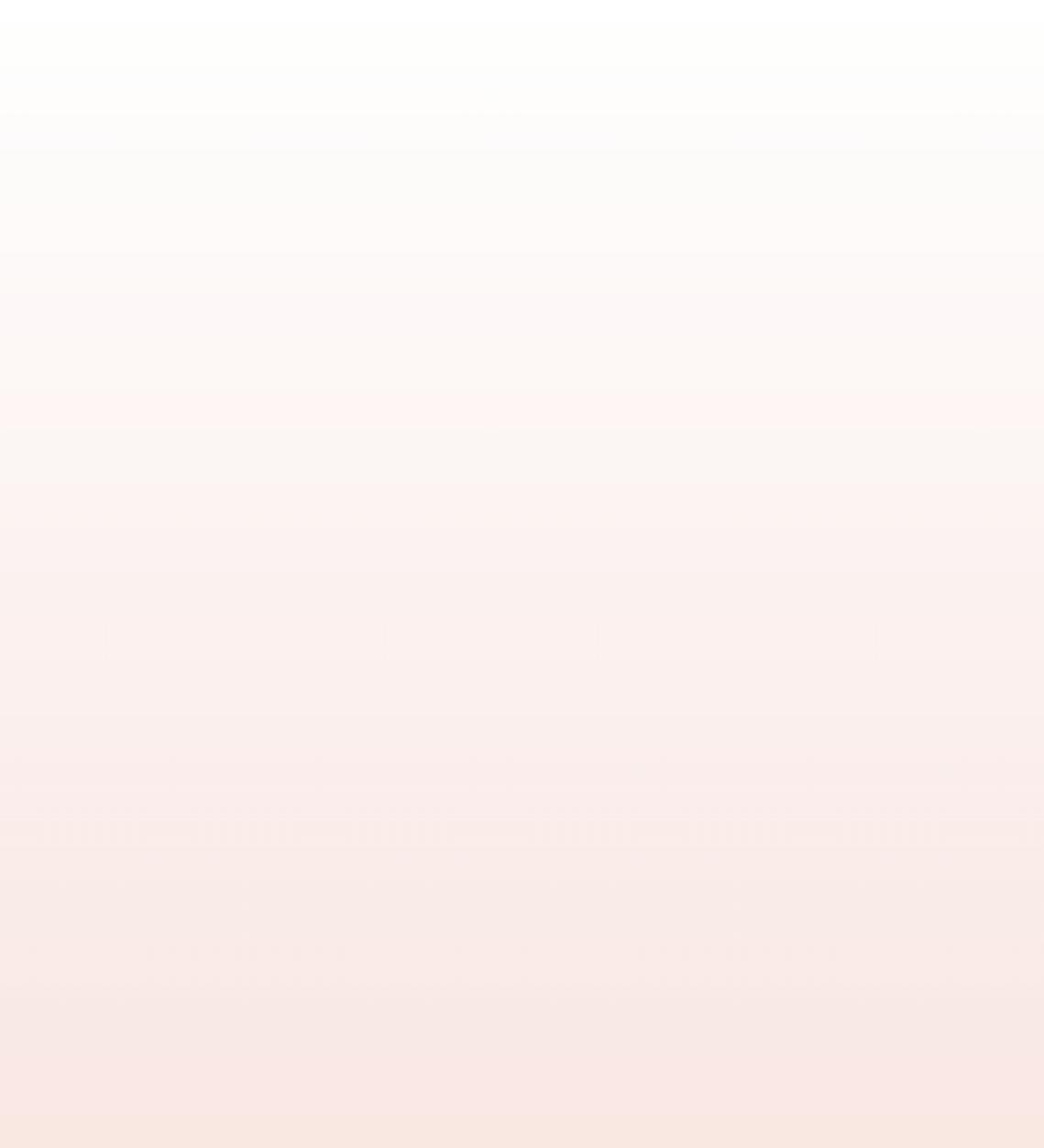

Any condition that injures or alters the function of the CNS can interfere with the regulation of breathing and, (cerebrovascular accident) are the most commonly seen CNS problems in adults. interfere with nerve transmission between the brain and the area below the level of the injury and may, for example, limit diaphragm
Immature breathing patterns, such as apnea or periodic breathing, are common in preterm and full-term
There are too many nurses trying to teach me.They tell me different ways to do it or make me go over what already know, so get confused. try to tell them what already know or what another nurse told me to do, but they want to do it their way.They should have this all written down somewhere. want my husband to learn, but he can’t be here during the day, and that’s the only time anyone tries to show me how to do it. asked the doctor about learning about later on in his office, but he didn’t want to talk about it. He said the nurses here would teach me.
➤ What barriers to participating in her own care does Mrs. Yablonski identify? Would they be applicable to other patients?
➤ How is team communication affecting this situation?
➤ Does Mrs. Yablonski see herself as valuable partner in her care?
In the remainder of the chapter, we discuss focused respiratory assessment and the nursing activities to maximize ventilation and gas exchange. In Chapter 20, the section Respiration provides more information about assessing respirations. Also,
➤ What might the effects be Mrs. Yablonski felt more empowered?
➤ Does she seem to have conflict regarding how much care she wants to take over? If so, how should her nurse manage the conflict?
➤ What are the potential negative outcomes if Mrs. Yablonski goes home before she masters her tracheostomy care?
➤ What can the nurse manager do to make Mrs.Yablonski’s care more patient centered?
Go to Chapter 20, Procedure 20-5: Assessing Respirations, in Volume 2.
Source: Kozin, E., Straton, J., & Kapo, J. (2012). Tracheostomy care. Journal of Palliative Medicine, 15, 359–360.
iCare 36-1
Although suctioning helps remove secretions, it also removes air from the airways and causes the patient’s O levels to fall. Therefore, suctioning must be done quickly and is often accompanied by supplemental oxygen. Suctioning can also irritate mucous membranes done too frequently.
Experiencing inadequate oxygenation is frightening. Anxiety, fear, and panic can set in quickly.
Suction catheters may be open tipped or “whistle tipped” (Fig. 36-13A and B). Most suction catheters have a port on the side, over which you place your thumb to control the suction. A Yankauer tube (Fig. 36-13C) is a rigid device for suctioning the oral cavity.
As the name implies, neuromuscular abnormalities can involve both the muscles and the nerves involved in
■ Use a calm and confident approach when performing interventions to promote optimal respiratory function.
■ Provide emotional support and comfort during episodes of deoxygenation to help alleviate fear.
Collaborating and Delegating Both respiratory therapists and nurses are responsible for suctioning and tracheostomy care. The respiratory therapist and the nurse should keep each other informed of changes in the patient’s condition. Airway suctioning is usually performed by RNs and LPNs, but not by UAPs. UAPs may use a Yankauer tube to suction the oral cavity as part of maintaining hygiene and preventing aspiration of oral secretions.
Neuromuscular abnormalities can affect gas exchange by limiting movement of the muscles involved with breathing. Trauma, stroke, and medications are the most common causes.
Example Client Conditions illustrate “need-to-know” information on key concepts using a graphic approach

NEW for Basic Nursing, 3rd Edition! Updated to reflect the cognitive skills in the NCSBN Clinical Judgment Measurement Model
■ Sit down and make eye contact. Speak calmly and keep the patient informed of what you are doing—for example, Mr. Brown, realize you are having trouble breathing right now, but you have had a nebulizer treatment. am here with you. Let’s take some deep breaths together and relax. I will recheck your respiratory status and oxygenation level in a few minutes.
■ Hold the person’s hand, practice therapeutic touch, and sit with him while providing interventions.
Key Point: Pharyngeal suctioning is performed to prevent oral and nasal secretions from entering the lower airway when the patient is too weak to cough them up.
Suctioning the pharynx triggers cough, which helps loosen and mobilize secretions.
■ Most patients find oropharyngeal suctioning more comfortable than the nasal approach.
■ Nevertheless, you should use a nasal approach if the patient is unable to cooperate and automatically bites down when anything is placed in his mouth, or if the jaw is wired.
iCare highlights the important role of caring in nursing by modeling behaviors and conversations that demonstrate how a nurse can provide compassionate care.
■ The patient’s condition determines whether you suction the pharynx through the mouth or nose.

AU: Please verify crossreference
d. What would you tell Haley to do in order to expectorate the sputum specimen?
4. Nursing Process (Assessment): In the admission data, what important information is missing with regard to her respiratory status?
CARING
5. Self-Knowledge: Describe one or two patient care experiences you might draw upon to help you in caring for Haley. In what ways were those patients similar to Haley, and how might that help you?
Haley, a 15-year-old female high school student, was admitted to the hospital with shortness of breath and rightsided chest pain when breathing. She states that she has had “the flu” for 3 days. She has a history of asthma since age 6 and smokes half a pack of cigarettes a day. Both her parents are heavy smokers. An IV was initiated, and she is receiving 800 mg of vancomycin (an antibiotic) intravenously every 12 hours. She is not on oxygen therapy, but receives 10 incentive spirometer treatments per hour while awake. Her heart rate is 80 beats/min, respiratory rate, 24 breaths/min, and blood pressure, 110/70 mm Hg. Her skin is pale but warm, and capillary refill time is 2 seconds. She has no clubbing of the fingers. She is urinating approximately 400 mL of clear yellow urine every 8 hours and maintaining a normal bowel elimination pattern. Laboratory results are as follows:
Red blood cell count (RBCs): 3.56 × 106 (3.56 million/mm )
White blood cell count (WBCs): 11,800/mm3

Hemoglobin: 11.2 g/dL
Hematocrit: 32.7%
Applying the Full-Spectrum Nursing Model exercises and Critical Thinking and Clinical Judgment questions develop students’ clinical judgment and decision-making skills as they apply what they are learning to real patients.
6. Ethical Knowledge: After you finish collecting the sputum specimen, what do you think Haley’s biggest concern is right now?
1. Recall the three patients discussed in the Meet Your Patients scenario in your textbook in Volume 1:
■ Mary is a 4-year-old girl with a history of asthma. Her mother, Ms. Green, has brought her in because of an “asthma attack.” Mary is sitting on her mother’s lap and breathing rapidly through an open mouth. Her cough sounds congested and wheezy. The nurse practitioner has ordered a nebulized treatment containing albuterol (Proventil) and ipratropium bromide (Atrovent).
■ Mr. Chu is a 78-year-old man complaining of cough, sore throat, fatigue, and weakness. His temperature is 100.4°F (38°C), pulse is 90 beats/min, respirations are 26 breaths/min, and BP is 166/82 mm Hg.
Haley says, “I feel really tired, and too weak to even pick up a glass of water.” Her cough produces white, thick sputum. Sputum culture on admission confirms a diagnosis of streptococcal pneumonia.
1. Theoretical Knowledge:
■ William is a 19-year-old man who has had a sudden onset of right-sided chest pain and shortness of breath. His chest x-ray exam revealed a right pneumothorax, and he is currently receiving 35% oxygen by face mask while waiting for an ambulance to transport him to the hospital for further evaluation.
a. Which patients are experiencing problems with ventilation? Explain your answer.
a. According to the Centers for Disease Control and Prevention, should Haley have received a pneumonia immunization? Why or why not?
b. Which patient appears to be experiencing problems with hypoxia? Does the problem appear to be related to oxygenation or perfusion? Explain your answers.
b. What is clubbing of the fingers? You may wish to refer to Chapter 22 for review, or to a medical-surgical nursing text.
2. Critical Thinking (Analyzing Assumptions): Why is it a positive finding for Haley that she does not have clubbed fingers?
c. Mr. Chu has smoked two packs of cigarettes per day for 50 years. ABGs reveal a low PO2 and a high PCO2 consistent with chronic lung disease. He is diagnosed with an acute exacerbation of chronic bronchitis. He is placed on oral antibiotics and long-acting bronchodilators by metered-dose inhaler (MDI). What teaching could you offer to help Mr. Chu mobilize and expectorate secretions?
d. Mary receives her nebulizer treatment and markedly improves. The physician has prescribed a variety of take-home medications that you must teach her mother about. The treatment plan includes a protocol based on peak expiratory flow monitoring. Discuss how you might involve Mary in her own care.
e. William’s chest x-ray film reveals a spontaneous pneumothorax. There is no apparent fluid in the pleural space. What chest tube systems can be used to treat his pneumothorax? Explain your thinking.
H H H H H“The Clinical Judgment activities have created an excellent opportunity to engage students in clinical reasoning and clinical judgment as well as introduce NGN style questions and format early in the nursing program.”
—Jennifer T., Instructor, Maryville University
7687_Ch36_763-815 11/06/19 10:30 AM Page 805
804 UNIT Supporting Physiological Functioning
Procedure 36-12 ■ Inserting an Oropharyngeal Airway (continued)
Document the following:
■ Date and time of airway insertion
■ Type and size of airway (oropharyngeal or nasopharyngeal)
■ Assessments before and after the procedure, including breath sounds and focused respiratory assessment
■ Any suctioning performed
Patient’s tolerance of the procedure Adverse reactions and interventions taken
Practice Resources
American Association of Critical-Care Nurses (2016); American Heart Association (2015); Brown, C. Sackles, J., Mick, N. (2017).
7. Have the patient open her mouth. Depress the tongue with a tongue blade and inspect the pharynx for proper placement of the tube tip. Use a penlight, necessary, for better visualization.
When the tube is fully inserted, the outer flange of the tube should rest on the nostril, and only the tip of the tube should be visible at the top of the posterior pharynx. ➤
8. Check for correct placement and function: Close the patient’s mouth, and place your finger close to the tube’s opening to feel for air exchange.
9. Auscultate the lungs for the presence of bilateral breath sounds.
What if .
■ After you insert the airway, the patient coughs, gags, vomits, or has laryngospasm?
➤ For steps to follow in all procedures, refer to the Universal Steps for All Procedures found on the inside back cover.
The American Heart Association guidelines (2015) direct that you should insert nasopharyngeal airway only if you are trained in its use.
■ Nasopharyngeal airway of the correct size
■ Tongue blade
■ Procedure gloves
■ Water-soluble lubricant
■ Penlight
■ Suction equipment
■ Resuscitation bag and oxygen source (depending on the patient’s status)
Determine the appropriate airway size: (1) Measure the diameter of the patient’s nostril and use an airway that is slightly smaller than that; and (2) measure the distance from the tip of the patient’s nose to the earlobe, and use an airway about 2.5 cm (1 in.) longer than that measurement.
Airways are sized by their internal diameter. Generally, the larger the internal diameter, the longer the tube. Airways are available in a variety of pediatric and adult sizes.
Small adult: to 7 mm
Medium adult: to 8 mm
Large adult: 8 to 9 mm
Assess respiratory status (e.g., breath sounds, respiratory rate and effort, skin color, pulse oximetry findings). Findings confirm the need for the airway and provide baseline for evaluating the effectiveness of the intervention.
10. Remove the airway at least every 8 hours to check nasal mucous membranes for ulceration or irritation. Clean the airway at this time: Place in basin, rinse with hydrogen peroxide, then rinse with water. Use a pipe cleaner to remove secretions, if necessary. Reinsert the airway in the other nostril.
To avoid skin and mucous membrane irritation and breakdown and to prevent infection
The tube may be too long. If the tip extends beyond the top of the posterior pharynx, remove it and insert a shorter one.
Assess respiratory rate and effort.
Assess breath sounds.
Observe for bleeding of nasal mucosa; suction as necessary.
If the patient is receiving artificial ventilation, monitor for gastric distention and hypoventilation.
Provide frequent oral and nares care; assess the skin around the nostril.
Assessments before and after the procedure, including breath sounds, focused respiratory assessment, and condition of the mucous membranes
Any suctioning performed
Patient’s tolerance of the procedure
Adverse reactions and interventions taken Removal of the airway, cleaning, and replacement in the other nostril
You should not delegate this procedure because it requires specialized knowledge, training, and assessment skills. Commonly, this procedure is performed by respiratory therapist. Procedure Steps
Assess for contraindications (e.g., anticoagulant therapy, hemorrhagic disorder, nasopharyngeal deformity, sepsis).
Up to 30% of patients experience airway bleeding after insertion of a nasopharyngeal airway.
➤ When performing the procedure, always identify your patient according to agency policy, using two identifiers, and be attentiv to standard precautions, hand hygiene, patient safety and privacy, body mechanics, and documentation.
Document the following: Date and time of airway insertion Type and size of airway (nasopharyngeal)
Practice Resources
American Association of Critical Care Nurses (2017); American Heart Association (2015); American Red Cross (2011.); Brown, C. Sackles, Mick, N. (2017); Bullard, D., Brothers, K., Davis, C., et al. (2012).
1. Perform hand hygiene and don procedure gloves. Helps prevent transfer of microorganisms from the patient.
2. Position the patient supine or in semi-Fowler’s position. Explain the procedure. A semi-Fowler’s position facilitates airway insertions. Explaining may alleviate anxiety, enabling the patient to cooperate more with the procedure.
3. Validate that the airwaysize is correct. Hold the airway next to the patient’s face. The length of the airway should measure from tip of nose to jawline below the ear.
4. Lubricate the airway with watersoluble lubricant. Prevents trauma to mucosa during insertion.
5. Tilt the patient’s head backward to hyperextend the neck. Then push up the tip of the nose and gently
insert the tip of the airway into the nose.
6. Advance the airway along the floor of the nostril into the posterior pharynx behind the tongue—until the outer flange rests on the nostril. If you meet resistance, rotate the tube slightly to enhance passage. Do not force against resistance. Forcing the tube can cause tissue trauma and airway kinking.
Davis Advantage uses a unique and proven approach across a Learn-Apply-Assess continuum to engage students and help them make the connections to key topics. Aligned with their textbook, this innovative online solution meets each student’s individual needs with Personalized Learning Plans that reflect their learning styles and areas of strength and weakness.
Each Personalized Learning assignment begins with a Pre-Assessment quiz that gauges the student’s comprehension of the content. Topic by topic, students then work through their assignments by watching videos and completing dynamic activities to reinforce learning and practice applying their knowledge.
After completing each video and activity, a Post-Assessment quiz evaluates mastery of the content within the topic. Each student’s results feed into their Personalized Learning Plan, documenting their progress through each topic and highlighting areas for additional study.!


Animated mini-lecture videos connect with all learning styles to make must-know concepts more relatable and easier to understand.
Interactive learning activities check students’ understanding and expand their knowledge.
Comprehensive rationales help students understand why their responses are correct or incorrect.
The Student Dashboard provides quick snapshots of performance, time spent, participation, and strengths and weaknesses at a glance.

94% of students using Davis Advantage said it improved their scores.
Online content subject to change. Screenshots shown reflect content from Davis Advantage for Medical-Surgical Nursing, but functionality is identical in every course area.

Clinical Judgment elevates students’ clinical reasoning by challenging them to think critically and make informed decisions that achieve the best patient outcomes. Real-world case studies mirror the complexities they will encounter in a variety of healthcare settings, helping them to build the skills they need to practice safe and effective nursing care and to prepare for the Next Generation NCLEX® with confidence.
Each case study presents all the information students need to assess the situation and the client data; synthesize their knowledge and experience; prioritize and take action; and evaluate outcomes.
The Patient Chart displays tabs for History and Physical Assessment, Nurses’ Notes, Vital Signs, and Laboratory Results. As the case progresses, the chart expands and populates with additional data.


Students are guided through an analysis of their responses which includes detailed rationales. The feedback encourages them to consider what data is important and how to prioritize the information, while reinforcing thought patterns that result in safe and effective nursing care.

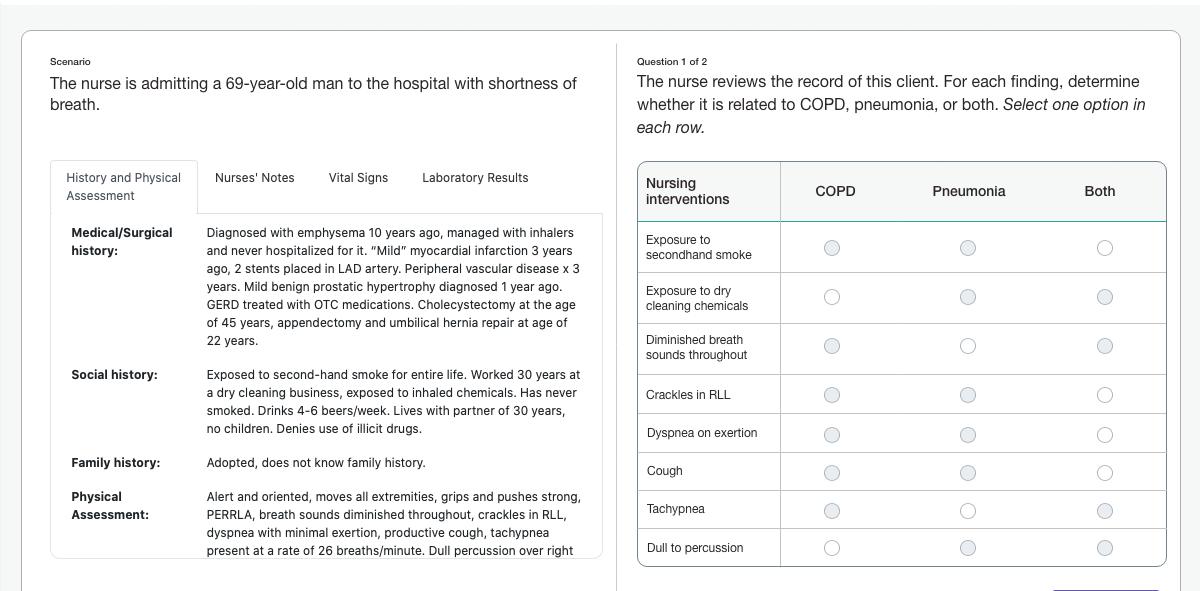
You answered 2 out of 6 questions correctly.
Complex questions in the new Next Gen formats align with the cognitive areas of the NCSBN Clinical Judgment Measurement Model, requiring careful analysis, synthesis of the data, and multi-step thinking.
Each question identifies the cognitive skills practiced according to the NCSBN Clinical Judgment Measurement Model and includes page references to the text for further remediation.
Test-taking tips provide important context for the higher levels of knowledge and understanding that underlie clinical judgment. They also offer strategies for how to consider the structure of each question type when answering.
Quizzing uses NCLEX®-style Q&A to provide the additional practice students need to master must-know content and improve their scores on classroom and certification exams. NCLEX®-style questions cover the same topics and concepts as the textbook and align with Personalized Learning and Clinical Judgment to provide another way to assess how well students understand the course material.
Personalized Learning Plans monitor students’ performance on each Personalized Learning, Clinical Judgment, and Quizzing assignment to highlight areas of strength and weakness.
98% of students said Davis Advantage helped them make the connections.
Comprehensive rationales provide students with immediate feedback for on-the-spot remediation that explains why their responses are correct or incorrect. Page-specific references direct them to relevant content in their text, while Test-Taking Tips improve exam skills.
High-quality questions including more difficult question types like select-all-that-apply challenge students to think at higher cognitive levels.
Students can toggle between Personalized Learning, Clinical Judgment and Quizzing tabs to view their analytics for all assignments.

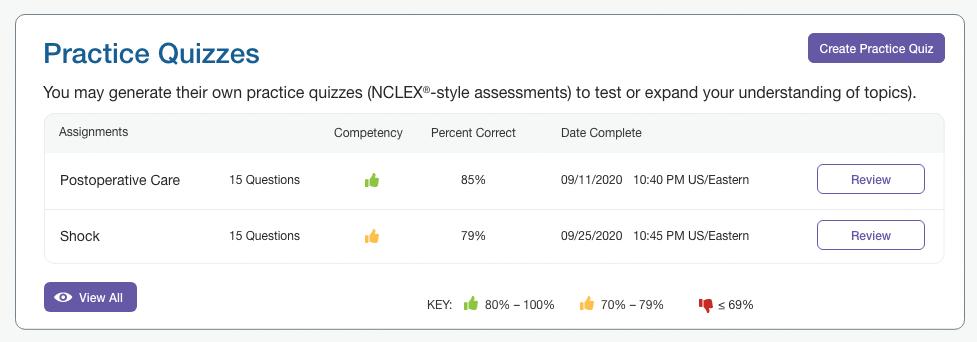
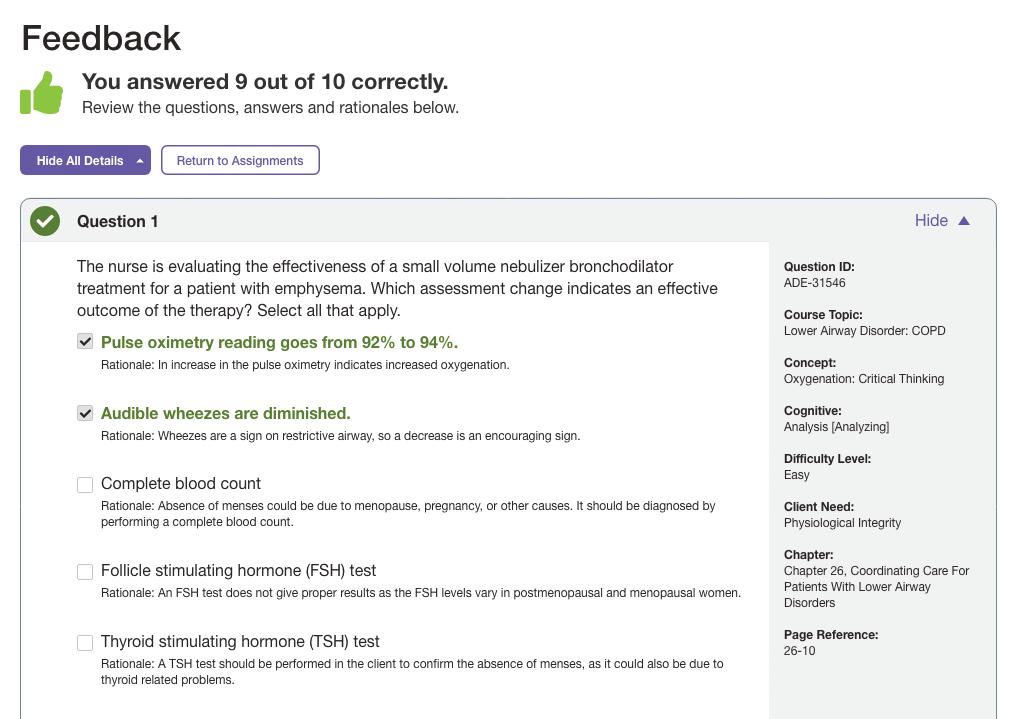
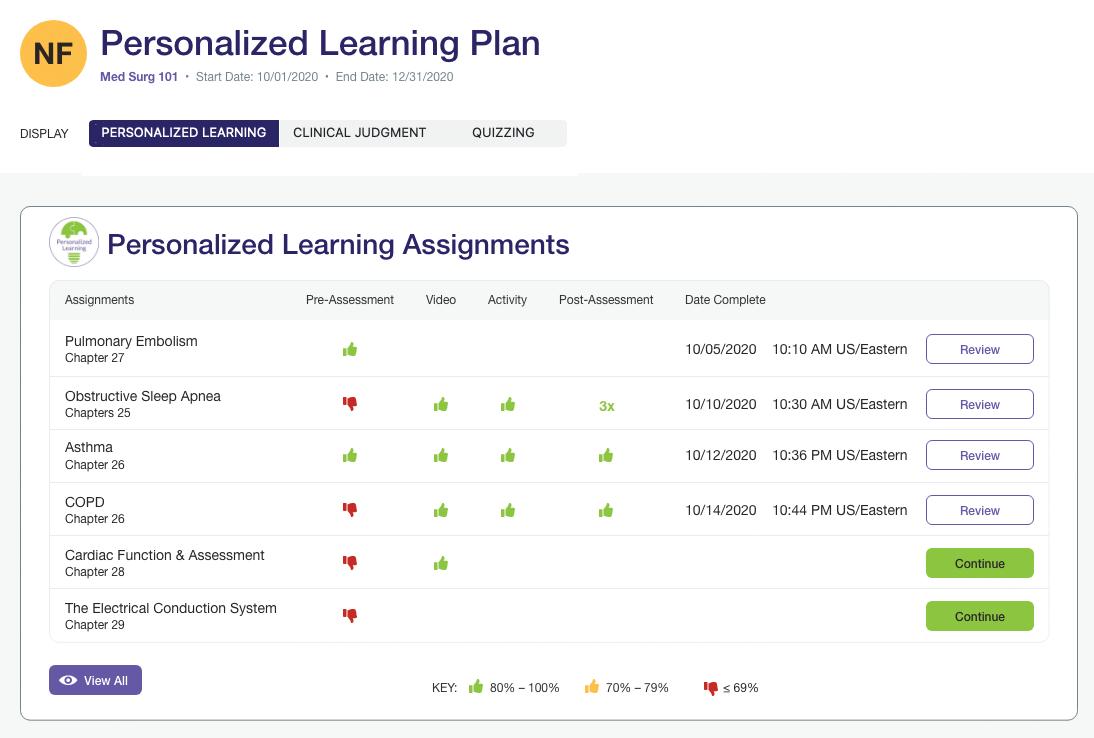
Students can easily create their own practice quizzes to focus on the topic areas where they are struggling or to use as a study tool to prepare for an upcoming exam.
Personalized Learning Plans provide students with a snapshot of their progress across all their assignments, track ing their successes and identifying areas where they need to focus their studies.
Online content subject to change.
Whether you are teaching in-person or virtually, Davis Advantage makes teaching personal, responding to the unique challenges you face and the needs of your students. Actionable analytics enable you to track your students’ progress, assess their strengths and weaknesses, and provide content-focused remediation in real time while promoting an active and engaging learning environment.
!
Track participation and performance on each Personalized Learning Clinical Judgment and Quizzing assignment.
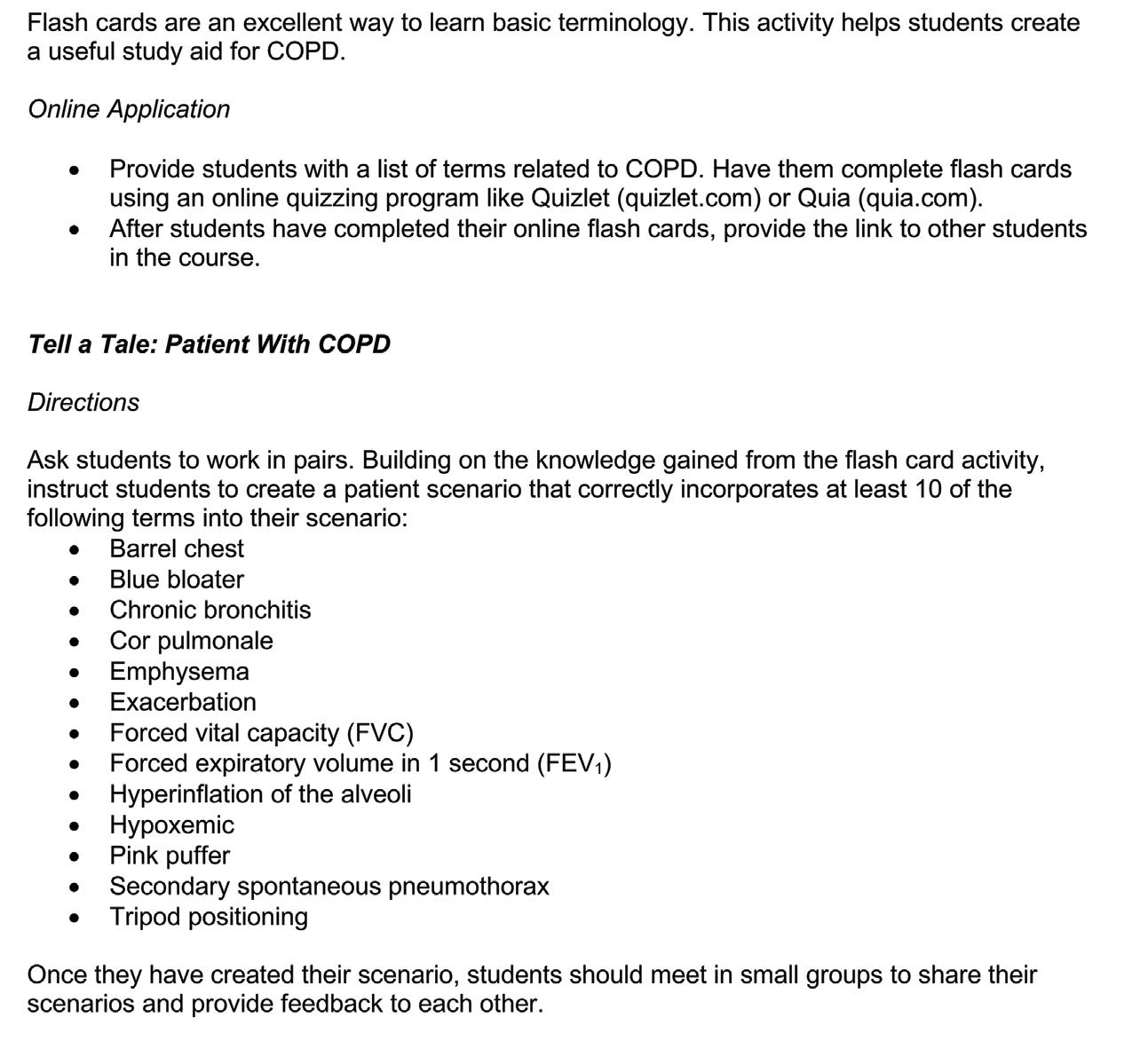
Engage students for higher level learning. Use your Personalized Teaching Plans to turn classroom time into an active, hands-on learning experience that focuses on improving their areas of weakness.
DID YOU KNOW?
99% of instructors would recommend Davis Advantage to a colleague.
Use your Dashboard to track your class’s overall performance. View average participation, time spent, and strengths and weaknesses. You can also quickly access individual assignments and your teaching plans.


Monitor mastery of content at both the individual and classroom levels. View your class’s performance at a glance, or drill down to see individual student progress
Personalized Teaching Plans for each topic provide everything you need to save time and ensure student success, including turnkey learning activities, discussion topics, small group work, and case studies.
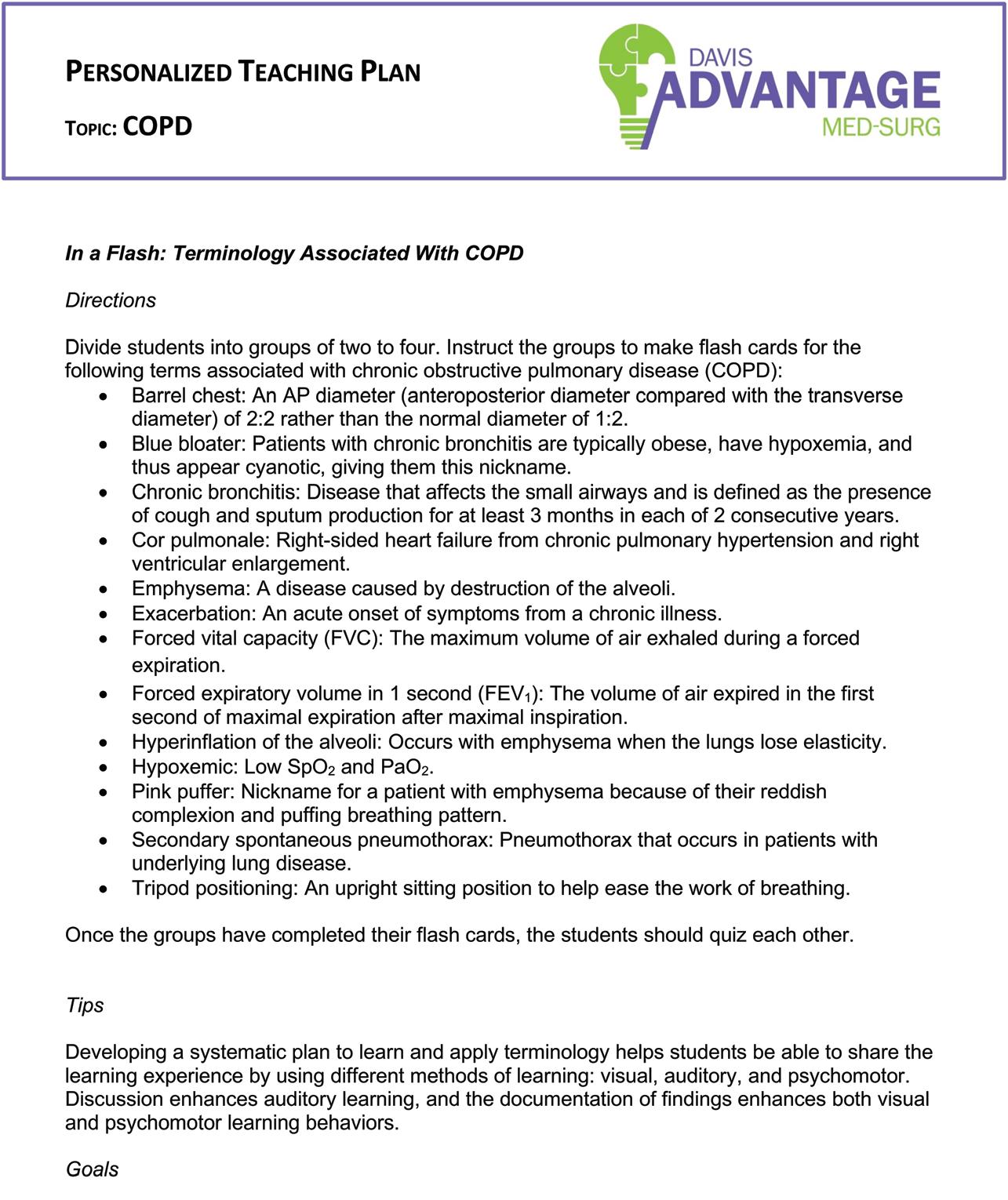
Online Application tips provide strategies for applying activities in a virtual learning environment.
Essential nursing skills demonstrated step-by-step
The Davis’s Nursing Skills Video collection features more than 140 videos that follow the written step-by-step procedures presented in Basic Nursing and Fundamentals of Nursing. Each video teaches students how to perform key nursing skills safely and correctly, while a narrator explains clearly what to do. “What If...” situations in many videos discuss how to handle special circumstances that could arise when performing a procedure.

A Skills Video Test Bank lets you create quizzes to test students’ comprehension of the skills and verify they have watched the videos.
The full collection of videos is reviewed annually for accuracy, with updates made to ensure currency and alignment with standards of practice and consistency with our Fundamentals texts.
Universal Steps for All Procedures
1. Universal Steps for All Procedures: Before Performing the Procedure
2. Universal Steps for All Procedures: When Performing & Evaluating the Procedure
Measuring Vital Signs
3. Taking an Axillary Temperature*
4. Taking an Oral Temperature 5. Taking a Rectal Temperature*
6. Taking a Temporal Artery Temperature* 7. Taking a Tympanic Membrane Temperature* 8. Assessing Peripheral Pulses 9. Assessing the Apical Pulse 10. Assessing for an Apical-Radial Pulse Deficit* 11. Assessing Respirations* 12. Measuring Blood Pressure* Health Assessment 13. Brief Bedside Assessment
32. Using Restraints: Mitt Restraint 33. Using Restraints: Vest Restraint 34. Using Restraints: Wrist/Ankle Restraint
Facilitating Hygiene 35. Bathing: Providing a Complete Bed Bath Using a Prepackaged Bathing Product 36. Providing Perineal Care 37. Providing Foot Care 38. Brushing and Flossing the Teeth* 39. Providing Denture Care* 40. Providing Oral Care for an Unconscious Patient 41. Making an Occupied Bed*
Nutrition 72. Checking Fingerstick (Capillary) Blood Glucose Levels* 73. Inserting Nasogastric and Nasoenteric Tubes* 74. Administering Feedings Through Gastric and Enteric Tubes with Infusion Pump* 75. Administering Feedings Through Gastric and Enteric Tubes
Using an Open-System Syringe*
76. Managing Gastric Suction: Initial Equipment Set-Up
77. Managing Gastric Suction: Emptying the Suction Container
78. Managing Gastric Suction: Irrigating the Nasogastric Tubing*
79. Removing a Nasogastric or Nasoenteric Tube
80. Measuring Urine Output from a Bedpan or Urinal
Skin Integrity and Wound Healing 108. Obtaining a Wound Culture by Swab* 109. Removing and Applying Dry Dressings* 110. Removing and Applying Wet-to-Damp Dressings* 111. Open-Pore Reticulated Polyurethane Foam Therapy (i.e., Vacuum-Assisted Closure [V.A.C.])* 112. Applying a Hydrating Dressing (Hydrocolloid or Hydrogel) 113. Placing Skin Closures* 114. Applying Bandages* 115. Shortening a Wound Drain* 116. Emptying a Closed-Wound Drainage System
• 1-Year Access Card
$90.00 (US)
ISBN-13: 978-0-8036-6059-5
• 18-Month Access Card $135.00 (US)
ISBN-13: 978-0-8036-6061-8
• 2-Year Access Card $180.00 (US) ISBN-13: 978-0-8036-6063-2
• 3-Year Access Card $270.00 (US) ISBN-13: 978-0-8036-6065-6
• 4-Year Access Card $360.00 (US) ISBN-13: 978-0-8036-6067-0
Or you can purchase access online at FADavis.com
Promoting Asepsis and Preventing Infection 14. Hand Hygiene: Using Soap and Water 15. Hand Hygiene: Using Alcohol-Based Handrubs 16. Donning Personal Protective Equipment (PPE)* 17. Removing Personal Protective Equipment (PPE)* 18. Surgical Handwashing: Brushless System* 19. Sterile Gown and Gloves (Closed Method)* 20. Sterile Gloves (Open Method) 21. Setting Up a Sterile Field –Sterile Packaged Equipment* 22. Setting Up a Sterile Field – Sterile Fabric- or Paper-Wrapped Sterile Package 23. Setting Up a Sterile Field – Sterile Drape 24. Adding Supplies to a Sterile Field –Sterile Packaged Equipment 25. Adding Supplies to a Sterile Field –Fabric- or Paper-Wrapped Sterile Package 26. Adding Supplies to a Sterile Field – Sterile Drape 27. Adding Sterile Solutions to a Sterile Field –Sterile Packaged Equipment 28. Adding Sterile Solutions to a Sterile Field –Fabric- or Paper-Wrapped Sterile Package 29. Adding Sterile Solutions to a Sterile Field – Sterile Drape
Promoting Safety 30. Using Bed and Chair Monitoring Devices 31. Using Restraints: Belt Restraint
Administering Medications 42. Medication Guidelines: Steps to Follow for All Medications (Regardless of Route) 43. Administering Oral Medications: Tablet or Capsule* 44. Administering Oral Medications: Sublingual 45. Administering Oral Medications: Buccal 46. Administering Oral Medications: Liquid Medications 47. Administering Medication Through an Enteral Tube* 48. Administering Ophthalmic Medication 49. Administering Otic Medication* 50. Administering Nasal Medication* 51. Inserting a Rectal Suppository* 52. Applying Transdermal Medication* 53. Administering Metered Dose Inhaler (MDI) Medication* 54. Drawing Up Medication from Ampules* 55. Drawing Up Medication from Vials 56. Mixing Medication from Two Vials* 57. Mixing Medications from One Ampule and One Vial 58. Administering Intradermal Medication* 59. Administering Subcutaneous Medication* 60. Locating the Ventrogluteal Site* 61. Locating the Deltoid Site* 62. Locating the Vastus Lateralis Site* 63. Intramuscular Injection: Traditional Method* 64. Intramuscular Injection: Z-Track Method* 65. Administering IV Push Medications Through a Primary IV Line* 66. Administering IV Push Medications Through an Intermittent Device (IV Lock) When No Extension Tubing Is Attached to the Venous Access Device* 67. Administering IV Push Medications Through an Intermit tent Device with IV Extension Tubing* 68. Using a Volume-Control Administration Set 69. Using a Piggyback Administration Set with a Gravity Infusion 70. Using a Piggyback Administration Set with an Infusion Pump 71. Administering Medication Through a Central Venous Access Device*
81. Measuring Urine from an Indwelling Catheter
82. Measuring Post-Void Residual Urine Volume (PVR) with a Portable Bladder Scanner* 83. Obtaining a Sterile Urine Specimen from a Catheter* 84. Intermittent Urinary Catheterization* 85. Indwelling Urinary Catheterization* 86. Applying an External (Condom) Catheter* 87. Removing an Indwelling Catheter* 88. Intermittent Bladder Irrigation: Three-Way (Triple-Lumen) Indwelling Catheter* 89. Intermittent Bladder Irrigation: Two-Way Indwelling Catheter* 90. Continuous Bladder Irrigation*
Bowel Elimination 91. Placing a Bedpan* 92. Removing a Bedpan* 93. Administering a Cleansing Enema* 94. Changing an Ostomy Appliance* 95. Irrigating a Colostomy 96. Applying an External Fecal Collection System
Pain 97. Setting Up and Managing Patient-Controlled Analgesia by Pump* Physical Activity and Mobility 98. Moving a Patient Up in Bed 99. Moving a Patient Up in Bed Using a Mechanical Lifting Device 100. Turning a Patient in Bed* 101. Logrolling a Patient 102. Transferring a Patient from Bed to Stretcher*
Dangling a Patient at the Side of the Bed
Transferring a Patient From Bed to Chair*
Assisting with Ambulation (One Nurse)*
Assisting with Ambulation (Two Nurses)*
Performing Passive Range-of-Motion Exercises
117. Administering Oxygen 118. Performing Tracheostomy Care Using Sterile Technique* 119. Performing Tracheostomy Suctioning (Inline Closed System) 120. Performing Endotracheal Suctioning (Open System)* 121. Performing Upper Airway Suctioning: Oropharyngeal 122. Disposable Chest Drainage Systems: Setting Up 123. Disposable Chest Drainage Systems: Connecting & Dressing*
Fluids,
124. Initiating a Peripheral Intravenous Infusion* 125. Regulating the IV Flow Rate 126. Setting Up and Using Volume-Control Pumps 127. Changing the IV Solution 128. Changing the IV Administration Tubing and Solution 129. Peripheral IV Dressings* 130. Central Line Dressings* 131. PICC Line Dressings 132. Discontinuing a Peripheral IV 133. Administering Blood and Blood Products* 134. Managing a Transfusion Reaction 135. Assisting with Percutaneous Central Venous Catheter Placement 136. Converting a Primary Line to a Peripheral IV Lock
137. Teaching a Patient to Deep Breathe and Cough* 138. Teaching a Patient to Move in Bed 139. Teaching Leg Exercises* 140. Applying Antiembolism Stockings* 141. Applying Sequential Compression Devices*
Wilkinson | Treas | Barnett | Smith
Fundamentals of Nursing Procedure Checklists
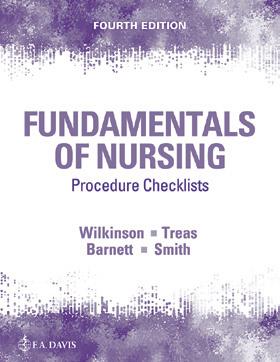
4th Edition
$41.95 (US) | ISBN-13: 978-0-8036-7689-3
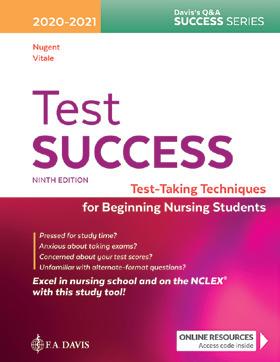
NCLEX®-Style Q&A Review, 6th Edition

About $55.95 (US) ISBN-13: 978-1-7196-4684-0
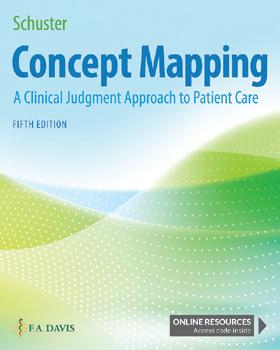
A Clinical Judgment Approach to Patient Care, 5th Edition
$47.95 (US) | ISBN-13: 978-0-8036-9473-6
Nugent | Vitale Test Success
Clinical Judgment and Test-Taking Strategies, 10th Edition
About $51.95 (US) ISBN-13: 978-1-7196-4724-3
Myers RNotes® Nurse’s Clinical Pocket Guide, 6th Edition

About $35.95 (US) ISBN-13: 978-1-7196-4625-3
Doherty
Prioritization & Clinical Judgment for NCLEX-RN® 2nd Edition
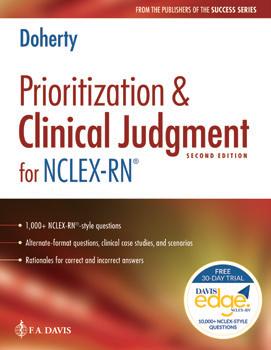

$48.95 (US) | ISBN-13: 978-0-8036-9723-2
NEW EDITION! COMING SOON! REVISED REPRINT!
Doenges | Moorhouse | Murr
Nursing Care Plans
Guidelines for Individualizing Client Care Across the Life Span, 10th Edition

$65.95 (US) | ISBN-13: 978-0-8036-6086-1
Doenges | Moorhouse | Murr
Nursing Diagnosis Manual Planning, Individualizing, and Documenting Client Care, 7th Edition
$79.95 (US) | ISBN-13: 978-1-7196-4533-1
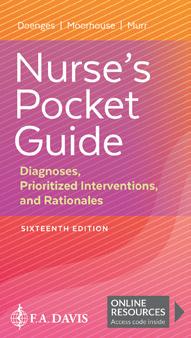
Doenges | Moorhouse | Murr
Nurse’s Pocket Guide Diagnoses, Prioritized Interventions and Rationales, 16th Edition
$53.95 (US) | ISBN-13: 978-1-7196-4307-8
of clinical requirements in your simulation lab

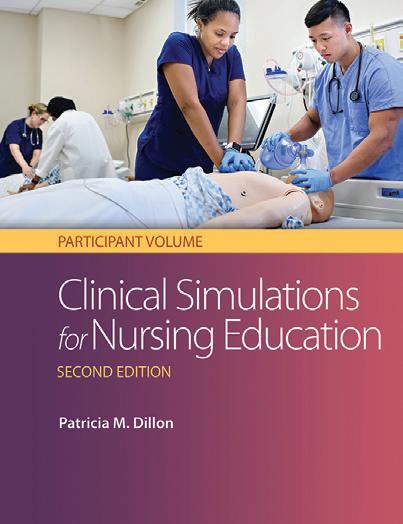
—Study by National Council of State Boards of Nursing (NCSBN)
THIS 2-VOLUME APPROACH gives your students experience in the key specialties they may not have in clinical.
Mobile & Online Access to 3 Must-Have Resources
Davis’s Drug Guide for Nurses
Davis’s Comprehensive Manual of Laboratory and Diagnostic Tests with Nursing Implications Taber’s Cyclopedic Medical Dictionary
Anytime, anywhere access to drug monographs, lab values, and medical terminology in class, clinical, and practice. One purchase offers both the mobile app and online access to the resources every student needs!
§ Searchable content
§ Trusted information

§ On-the-spot answers
Boynton Successful Nurse Communication Safe Care, Healthy Workplaces & Rewarding Careers, Revised Reprint
About $62.95 (US) | ISBN-13: 978-1-7196-4792-2
Your students’ passport to sim lab.
51 structured case studies simulate the wide range of patient care challenges students will encounter in practice. These scenarios help them develop the critical assessment, clinical-reasoning, and nursing skills they need to deliver safe and competent care—in a controlled, risk-free environment.
Each realistic, patient-care simulation focuses on a defined clinical domain, critical knowledge and skills, levels of competency, evidence-base practice guidelines, National Patient Safety Goals, and research-based design characteristics.
§ Integrates standards of practice, including provider orders, evidence-based practice guidelines, general nursing practice, and references, as well as preferred INACSL nomenclature.
§ Encompasses the full spectrum of clinical nursing practice domains, patient age levels, and cultural backgrounds at every level of health care—primary, acute, long-term, and palliative care.
§ Examines important topics in adult, pediatric, maternity, geriatric, emergency, mental-health, and community nursing as well as nursing assessment and nursing fundamentals.
§ Bases scenarios on real-life patient care situations with decision points prompting students for an assessment, a response, and an action.
496 pages | 2018 | Soft cover, spiral binding
$73.95 (US)
ISBN-13: 978-0-8036-6969-7
648 pages | 2018 Soft cover, spiral binding
$524.95 (US)
ISBN-13: 978-0-8036-6968-0
Prepare your students for clinical. Practice in a safe space.
The Facilitator Volume provides all of the information found in the Participant Volume, the answers to the student exercises, and two additional testing simulations, as well as everything you need to set up, administer, and facilitate each simulation.
Instructor
§ eBook
§ Teaching Simulations
§ Testing Simulations
§ Appendix with standard forms
Receive the Facilitator Volume FREE when you adopt 20 or more copies of the Participant Volume. Limited to 3 free copies per program.
Request preview access • Schedule a walkthrough • Learn more | Contact us at Hello@FADavis.com or visit FADavis.com/DavisAdvantage

COMING SPRING 2023!

A new way to monitor
at an institutional level
For adopters of multiple Davis Advantage products, Curriculum Analytics offers Deans and Directors even more insights into meaningful aggregate and cross-course data. These institutional-level analytics allow programs to easily track performance throughout the curriculum and identify trends over time by monitoring cohorts of students across their courses, as well as individual student performance in multiple course areas.

Direct access to a specialist to answer any questions

Personalized onboarding to help set up your course
Resource library with support materials to make implementation easy
Collaboration on curriculum strategies to ensure the best outcomes
will have access to a dedicated Digital Implementation Consultant who can suggest the best ways to use our products in your course and share best practices and strategies for success.
Contact Us to Learn More! Hello@FADavis.com
Learn how Davis Advantage can be customized to meet your needs and the needs of your class. Let us help!
Email Hello@FADavis.com or visit FADavis.com/DavisAdvantage
“I have always loved the top notch quick service from F. A. Davis and Davis Advantage is a game changer in the classroom, lab, and clinical.”
—Melanie M., Instructor, Maysville Community and Technical College, Licking Valley Campus
AVAILABLE NOW!
Access Card
4-Year Online Access
$89.95 (US) ISBN-13: 978-0-8036-7714-2
Or purchase access directly at FADavis.com
COMING SPRING 2023!
Access Card
4-Year Online Access
About $94.95 (US) ISBN-13: 978-1-7196-4648-2
Or purchase access directly at FADavis.com
Alleviate student fears. Build competence. Ensure patient safety.
Dosage Calc 3600 is a complete online program that guides students through learning, practicing, and assessing the knowledge they need to calculate drug dosages safely and accurately. It works with students every step of the way to conquer their fears, build their confidence, and provide the experience they need to be successful. ¡ Comprehensive, nursing-focused coverage guides students step-by-step as they develop competent calculation skills and safe medication administration practices. ¡

Instructor Resources
¡ Implementation Guide
¡ PowerPoint Presentations
¡ Test Bank
We have helped thousands of educators build more engaging and active courses to drive student success in class, on exams, and in their careers. Whether you are looking to start a new program, new to education, or an experienced instructor—you can count on us to help meet your challenges.
Discuss your program needs with our expert team to find the customized solutions that will achieve your curriculum goals.
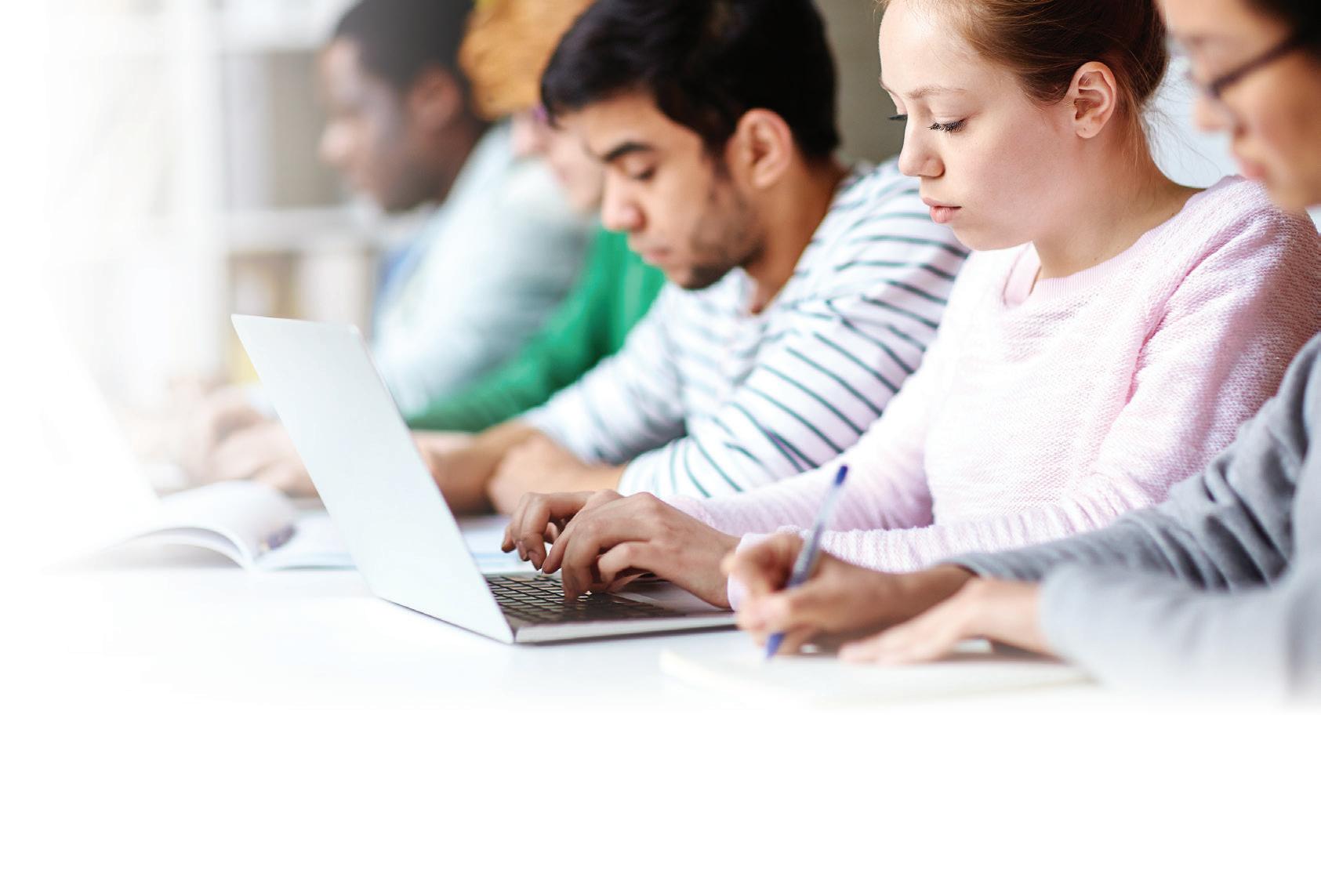
Receive 1:1 training that makes course set-up easy, saves you time, and improves student retention.
Access powerful tools to stay on top of new standards and test plans, evidence-based educational trends, and effective teaching strategies.
As a family-owned company, your program is important to us and we are committed to providing exceptional customer service.
F.A. Davis is dedicated to your success and eager to discuss how we can make a difference in your program.
Visit FADavis.com or email Hello@FADavis.com to start a conversation.
FADavis.com
©F.A. Davis. Printed in the U.S.A. Content is subject to change and intended for promotional use only. Content and product availability may be subject to change based on location. Pricing and special offers are in U.S. dollars and intended for individual orders in the U.S. only and subject to change. Fundamentals Brochure. 2022-2023